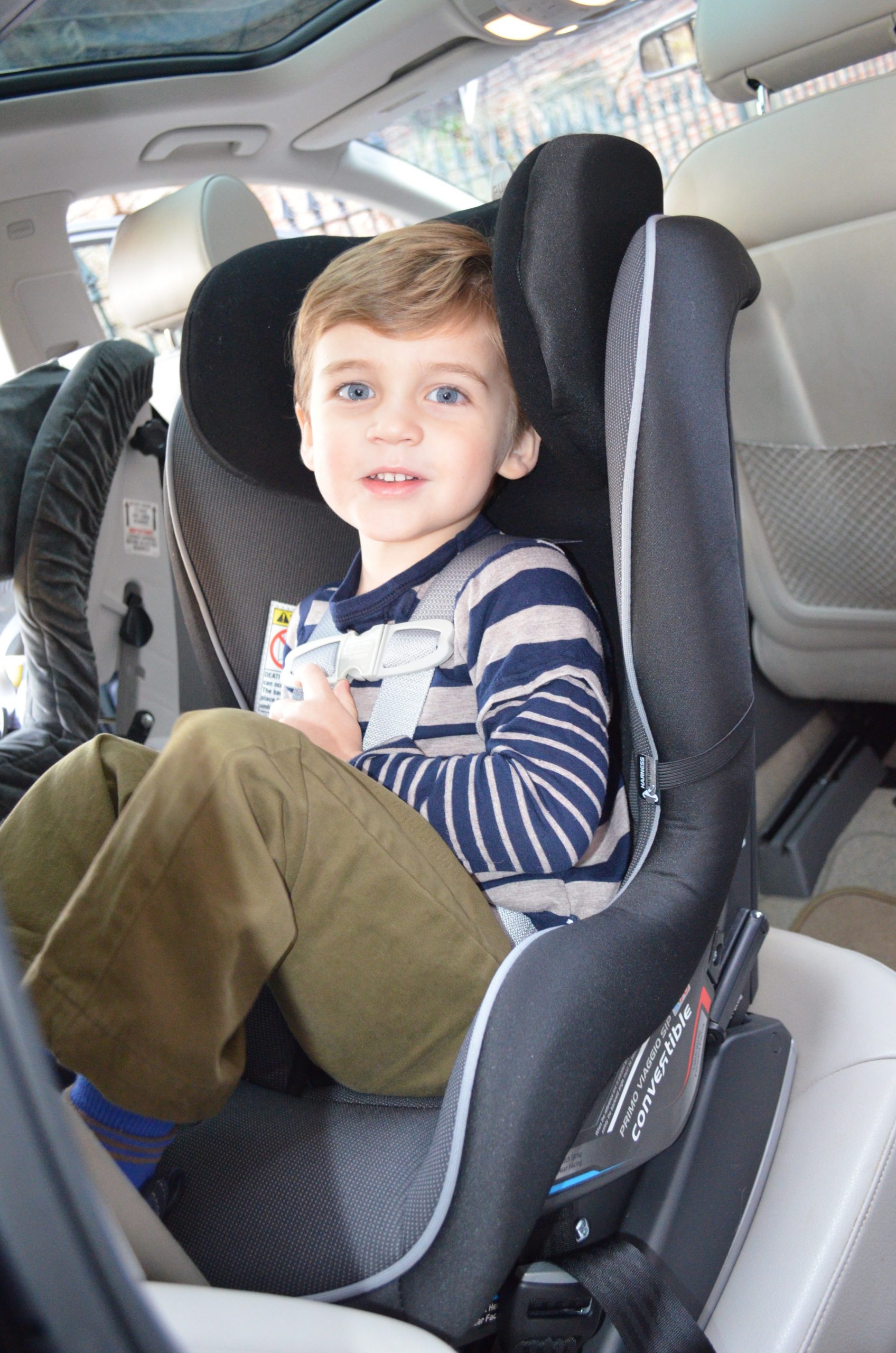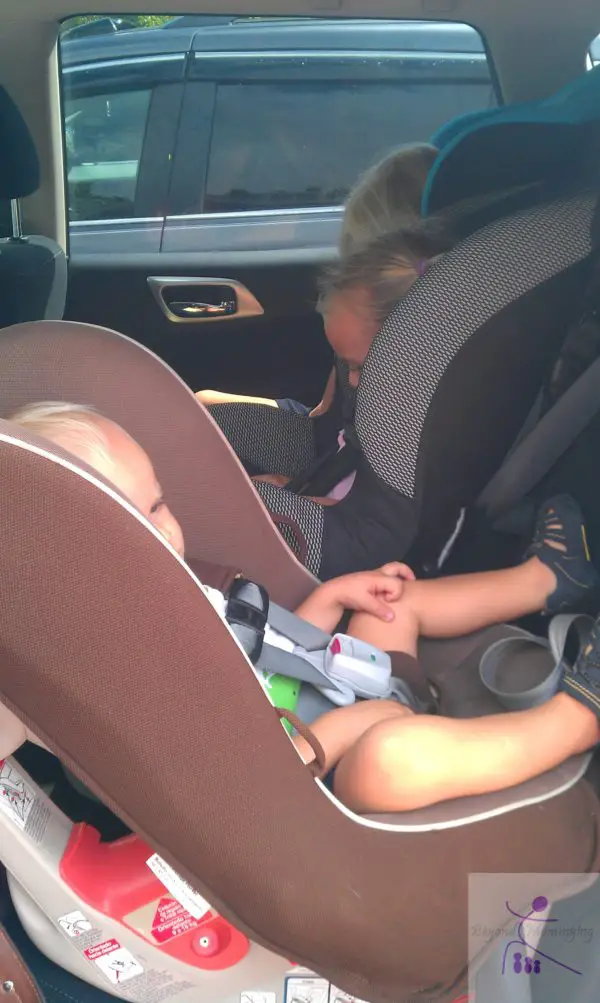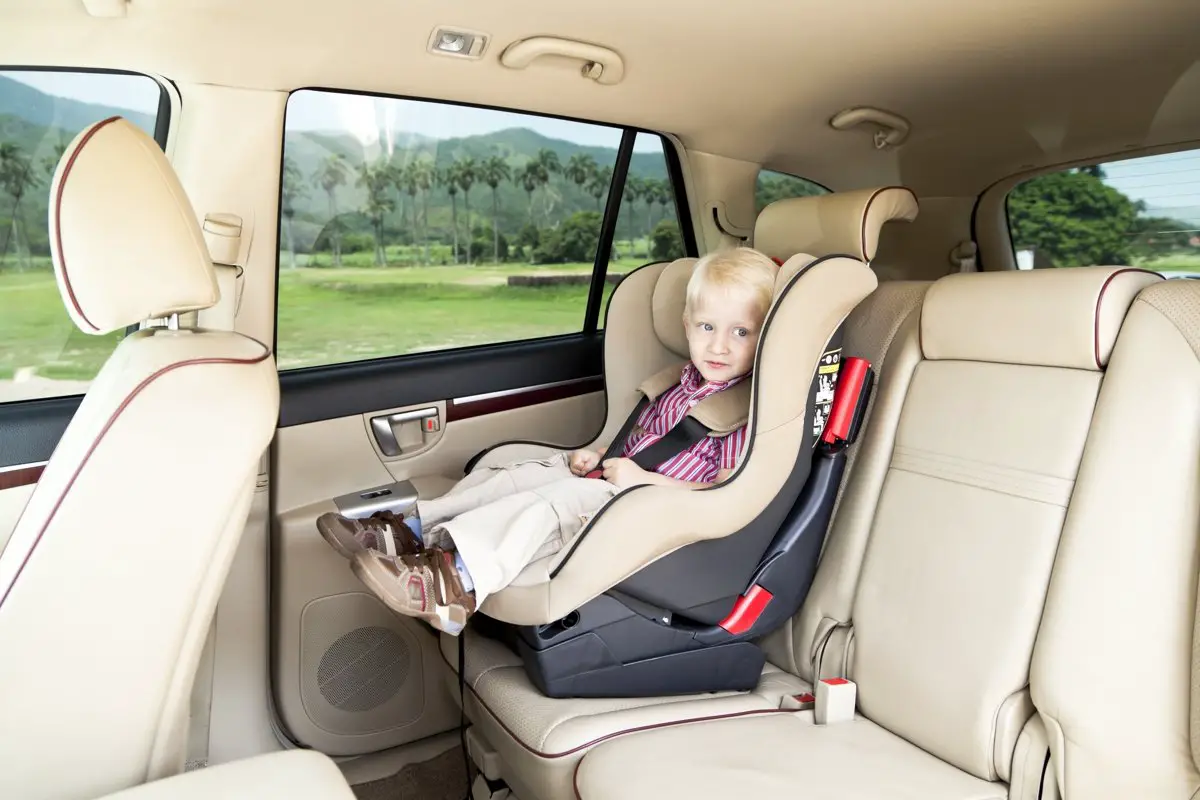The Issue Is Still Cloudy
Although shes excited by the AAPs new guidelines, Shapka also has some concerns. With the specific age removed, it makes it more broad for parents, she says. Age two, while potentially not as long as wed want, was an easy milestone to watch for. Im concerned that removing the number will confuse people. In other words, while the AAPs goal is to keep kids in rear-facing seats beyond age two, shes worried this could result in kids turning around sooner than ever. The onus is on parents to stay up to date and informed with issues related to their kids safety.
Read more:
Car Safety Seat Recommendations
Child car seats protect children from birth to their early teens against death and injury.
- Car accidents are the leading cause of accidental death in children.
- One-third of children killed in car accidents are not in car seats, booster seats or seat belts.
The Mississippi State Department of Health conducts safety seat checks and educates parents in the proper installation of car safety seats.
Also Check: Something Keeps Draining My Car Battery
What Are The Nj State Regulations For Car Seats
| c. | A child under the age of 8 and a height of 57 inches shall be secured as described in or until they reach the upper limits of the rear-facing or forwardfacing seat, then in a belt positioning booster seat. |
| d. | A child over 8 years of age or 57 inches in height must be properly secured by a seat belt. |
Read Also: What Oil Do I Use For My Car
New Jersey Car Seat Law
Birth to age 2: A child under age 2 and under 30 lbs. must be in a rear-facing car seat with a five-point harness. That means toddlers who are tall or have long legs must remain rear-facing until age 2 even if their knees are bent and their feet are pressed against the back seat of the car.
Ages 2 to 4: A child under age 4 and 40 lbs. must remain in either a rear-facing or a forward-facing car seat with a five-point harness in the back seat of a vehicle.
Ages 4 to 8: Children must remain in a car seat or a booster seat in the back seat of a vehicle until they are at least 8 years old or 57 inches tall. Once they reach that age or height, they can use the regular adult seat belts.
Age 8 and above: A child age 8 and older can sit in a regular seat using a seat belt. However, the New Jersey law does not specify when children over age 8 can move from the back seat to the front seat. The federal Centers for Disease Control and Prevention recommends children not sit in the front seat until age 12.
Front seats: If a vehicle doesn’t have a back seat , New Jersey’s law says a child can ride in the front seat in a car seat or a booster seat. But the vehicle’s passenger-side airbag must be disabled or shut off if a baby or toddler is using a rear-facing car seat strapped into the front seat of the vehicle. The force of air bags can injure small children if they deploy.
To Secure Your Child In A 5

- For your rear-facing child, make sure the harness straps are in the slot level with or just below your childs shoulders.
- For your forward-facing child, make sure the harness straps are in the slot level with or just above your childs shoulders.
- Tighten the harness straps. You should not be able to pinch the harness at the shoulder. The harness should be flat with no twists.
- Place the chest clip at armpit level.
- Bulky clothing or snowsuits should not be worn in the car seat. They can interfere with proper harness tightening and placement.
Also Check: How To Program Honda Key To Start Car
When To Turn The Car Seat Around Front
It used to be recommended that your baby stay rear-facing until the age of one year old. Now, the American Academy of Pediatrics is recommending that toddlers remain rear-facing until at least two years old or the recommended height and weight on your car seat.
Most car seat manufacturers have rear-facing car seats that allow children to remain rear-facing until they are at least two years old or weigh around 20 pounds. Many popular seats allow children to actually stay this way up to four years old.
One thing to keep in mind is that babies and toddlers dont know any differently when it comes to rear or forward-facing. If you can hold off to turn them until they are two years old, they will be a lot safer.
Forward Facing Car Seat Age: When Can Babies Face Forward
What is the age a child can use a front-facing car seat? Well, in Australia that answer is both simple and confusing. Legally, your gorgeous, wonderful baby must be kept in an approved rear-facing seat until he or she is six months old, and from that point you can put them in a forward-facing seat, but you dont have to, and they can stay facing backwards if you prefer.
The question, really, is not just about car seat laws, its whether babies should start facing forwards from the age of six months, and whether their tiny little necks, in particular, are up to it .
Also Check: How To Protect Car From Hail
What About Their Legs Isnt It Unsafe And/or Uncomfortable
You need to wait and know when can baby face forward in car seat. If the kids are uncomfortable because they cant fit their legs, you should know that its not a health hazard. Kids are flexible, and they manage comfortably even in a limited area. Their body adjusts to car movement, and it will not harm them. They can fold their legs or spread them if they dont fit properly. You can take breaks during your journey and let them relax if they find it too unbearable.
How Long Should My Child Remain In A Forward
Once your child has graduated to a forward-facing car seat, its recommended they remain in it until they reach the height and weight limit of their seat. This can be quite some time as forward-facing car seats can hold anywhere from 60 to 100 pounds depending on the model!
Its important to also keep in mind that even after your child has outgrown their forward-facing car seat, they should still use a booster seat to ensure your cars seat belt system fits them properly.
Children arent ready to use the seatbelt alone until theyre around
Don’t Miss: Arizona Title Not Notarized
When Can Baby Face Forward In Car Seat Australia
Children aged six months up to four years must use a rear- facing or forward facing child car seat with an inbuilt harness. Children aged four years up to seven years must use a forward facing child car seat with an inbuilt harness or a booster seat with an adult lap-sash seatbelt or child safety harness.
The Dreaded Motion Sickness Won’t It Help To Turn Around My Child
The long and short: most kids do not puke less when forward-facing compared to rear-facing.
Weve got lots of information on motion-sickness over here including an explanation of why it is believed to occur, things you can do to decrease the chance of your kid puking, and how to minimize the mess and clean up if your kid does puke.
Also Check: Az Title Transfer
What Does The Rest Of The World Say
We know from statistics that kids aged zero to two have higher injury numbers, and thats because theyre coming out of rear-facing too soon.
The answer to that question very much relies on who you ask, and if you happen to be Swedish, your attitude will probably shock any Aussie parent you speak to.
In Sweden, you see theres a strongly held belief that children should continue to sit facing backwards in a car – for safety reasons, not because they like to punish them – until they are four, or even six, years old, when they move into a booster seat, and face forward.
Things are also more prescriptive in the United States, where the American Academy of Pediatrics changed its guidelines, in 2018. Up until that point, its recommendation was that children should remain in rear-facing car seats until the age of two, as they will be 75 per cent safer in the event of a collision compared to sitting in forward-facing car seats.
Read More: Why ISOFIX child seats are so much safer for Australia
The revised guidelines removed the age recommendation and instead state that children should remain in rear-facing seats for as long as possible, until they reach the highest weight or height allowed by their car safety seats manufacturer.
She also pointed to Sweden as an exemplar of child safety regulations. Everyone does it there, she said. Its not a lawthey just all know its safer.
How Much Should A Baby Weigh To Face Forward In Car Seat 2019

Convertible. Most convertible car seats can be used in the rear- facing position until a child reaches the weight limit, typically 40 to 50 pounds. At that point, the seat can be converted into a forward facing car seat. These seats are larger and designed to stay installed in the vehicle.
Don’t Miss: Will Carvana Buy My Leased Car
A Look At The Consistent Rules And Recommendations
These regulations and recommendations are the same across Canada.
- Never position any child in a cars front row until its legal to do so in your jurisdiction. Dashboard-mounted air bags can be fatal to children. The only legally permitted exception is when the vehicle has no back seat, such as in a roadster or a single-cab pick-up.Many modern vehicles without rear seats have a sensor on the passenger seat that disables the airbags if a childs weight is detected. If you know your vehicle has this feature, then while its not ideal nor nearly as safe as a rear seat position, a child is permitted to sit in the front passenger seat provided hes still in an age- and weight-appropriate car seat.
- For a single child, the centre middle position in the second row is the safest place in the entire vehicle.
- Dont think you can save money by buying a car seat in the U.S. and bringing it home. Their safety regulations are different than ours, so seats bought there are not legal here.
- Dont use a second-hand car seat, either, unless you can be completely certain it isnt expired and youre aware of its history. Car seats are considered compromised as soon as theyve been in even a minor incident because of the fragility of the plastic and compression foam. If you dont know, its a no-go.
Knowledge Is Power When It Comes To Car Child Seats
Stage 3 refers to a booster seat used in conjunction with the cars built-in seat belt. Again, its recommended to put this off for as long as possible because the seat is no longer doing any of the work to keep your child safe at this stage. Rather, the purpose of the booster is to ensure that the seat belt follows the correct path the shoulder strap needs to sit squarely on the childs shoulder, not climbing up onto the neck, and the lap belt should fall low across the hips, not higher onto the torso.
Its therefore critical a child is developmentally ready to make this switch not only in weight and height, but also behaviour. A kid who cant be trusted not to pull at or unbuckle a seat belt or tuck the shoulder belt behind their back should remain in a five-point harness until they can be.
Recommended Reading: How To Get Rid Of Spiders In Car
Don’t Miss: How To Make Car Freshies
Why The New Car Seat Recommendation Matters
This is fantastic news, says Sharalyn Crossfield, an Ottawa-based Child Passenger Safety Technician Instructor. We know from statistics that kids aged 0-2 have higher injury numbers, and thats because theyre coming out of rear-facing too soon.
Theres no debate that sitting rear-facing is saferstats and crash tests have proven it over and over again. The recommendation to keep kids rear-facing beyond age two results from the need to support the young childs posterior torso, neck, head and pelvis and to distribute crash forces over the entire body, says the AAP. Developmental considerations, including incomplete vertebral ossification, more horizontally oriented spinal facet joints, and excessive ligamentous laxity put young children at risk for head and spinal cord injury.
How do rear-facing car seats address this risk? Mainly, they support a childs head, preventing the relatively large head from moving independently of the proportionately smaller neck. That said, rear-facing is safer for adults, too. Crossfield, for one, always chooses to sit rear-facing on trains because she knows that in an event of a crash, her legs are likely to absorb the impact opposed to her spine.
Other countries have already figured this out. In Sweden, for example, almost all children sit facing the back way beyond age two. Everyone does it there, says Crossfield. Its not a lawthey just all know its safer.
Time To Move To The Next Type Of Car Seat
You May Like: Is Carvana A Ripoff
What Age Do You Change To Front Facing Car Seat
Many years ago, in the days before the iPhone was invented, the minimum to turn forward facing was 1 year and 20 pounds. In 2011 both the AAP and NHTSA updated their recommendations to reflect the latest research in child passenger safety. The AAP now recommends that kids sit rear-facing until at least age 2.
How Much Should A Baby Weigh To Face Forward
You should switch your baby forward facing when they reach the maximum weight for rear-facing with their car seat.
This weight is usually around 22-35 pounds for rear-facing only seats, and 35-40 pounds for convertible seats. For 3-in-1 seats, the limit is usually around 40-50 pounds.
Overall, these weights vary from car seat to car seat. Always check your car seats manual or contact the manufacturer for details about the maximum weight for rear-facing use.
Weight Limit for Rear-Facing Children:
- Usually 22-35 pounds for rear-facing only seats
- In general 35-40 pounds for convertible seats
- Usually 40-50 pounds for 3-in-1 seats
- Check manual or manufacturer for your car seats specifications
You May Like: How Much Does A Car Salesman Make Per Car
Checking To Make Sure Your Forward
Try to install your child car seat as tightly as possible, to keep your child safer in a sudden stop or crash:
- Grab both sides of the child car seat where the seat belt or UAS belt is threaded through the child car seat
- Try to move the child car seat from side-to-side and front to back. It should not move more than 2.5 cm
What Is The Weight And Height For Front Facing Car Seat

Read labels and seat instructions to determine the correct seat for age, weight and height. Maximum forwardfacing harness weight range can vary from 40-85+ pounds. Make sure child is within weight/height limits for the seat and head is more than one inch below the top of the car seat shell.
Also Check: Car Registration Texas Fee
Can I Put My 9 Month Old In A Forward Facing Car Seat
Legally, your child can travel in an ECE R44/04 approved car seat facing forward once they are 9 kg, which is approximately age nine months. But dont be tempted to rush into making the switch. There are lots of good reasons why many parents choose to increase the age before facing their baby forward in a car seat.
How Do I Know My Child Is Safe In His Rear
There are several things to look for when strapping your child into his or her car seat.
- There should be at least 1 inch of car seat above your childs head. This indicates your child is still within the height limits.
- The harnesses should be at or below your childs shoulders. This keeps your child from sliding out of the seat in case of an accident.
- The harnesses should be snug check to see if you can pinch any of the harness straps between your fingers. If you can, tighten the harness more. A snug harness means less movement of your child in a crash, resulting in less injury.
- The chest clip should be at your childs armpit level. This slows your childs forward movement down in a crash, resulting in less stress on your childs neck and spine.
Did you know three out of four car seats are not used or installed correctly? Our certified car seat technicians are available to answer your safety seat questions. To schedule a car seat installation appointment, , call Sanfords Safety Center at , or email
Also Check: What Year Is My Club Car Golf Cart
